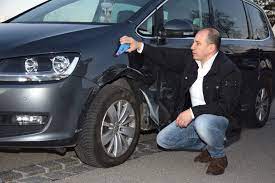Streamlining Car Damage Assessment: A Comprehensive Guide for Efficient Evaluation
Car damage assessment plays a pivotal role in the kfz gutachter kaltenkirchen automotive industry, serving as a cornerstone for insurance claims, vehicle repairs, and resale evaluations. However, the traditional methods of assessment often involve time-consuming processes and subjective judgments, leading to inefficiencies and inaccuracies. In this article, we delve into the realm of car damage assessment, exploring modern techniques and technologies that promise to revolutionize the process, making it more efficient, accurate, and streamlined.
Understanding Car Damage Assessment: Car damage assessment involves the evaluation of various aspects of a vehicle’s condition following an accident or incident. This assessment typically encompasses visual inspections, measurements, and documentation of damages to the exterior, interior, mechanical components, and structural integrity of the vehicle.
Challenges in Traditional Assessment Methods: Traditional methods of car damage assessment are often plagued by several challenges, including:
- Subjectivity: Assessments heavily reliant on human judgment may vary significantly among different evaluators, leading to inconsistencies in damage estimation.
- Time-Consuming: Manual inspections and paperwork can be time-consuming, delaying the processing of insurance claims and vehicle repairs.
- Limited Accuracy: Visual inspections alone may not reveal underlying damages, resulting in inaccuracies in damage assessment.
- Lack of Standardization: The absence of standardized assessment protocols can further exacerbate inconsistencies in evaluation results.
Modern Techniques and Technologies: To address the shortcomings of traditional assessment methods, the automotive industry has witnessed the emergence of innovative techniques and technologies:
- Computer Vision and AI: Advanced computer vision algorithms powered by artificial intelligence (AI) can analyze images of damaged vehicles to identify and quantify the extent of damages accurately. These AI systems can detect even subtle damages that may go unnoticed by the human eye.
- 3D Scanning and Imaging: 3D scanning technologies enable precise measurements of vehicle dimensions and deformations, providing detailed data for damage assessment. By creating accurate digital models of damaged vehicles, 3D imaging facilitates comprehensive analysis and documentation of damages.
- Mobile Apps and Digital Platforms: Mobile applications equipped with intuitive interfaces and digital forms streamline the documentation process during damage assessment. These apps allow evaluators to capture photos, record damage details, and generate reports directly from their smartphones or tablets, eliminating the need for manual paperwork.
- Blockchain Technology: Blockchain technology ensures the integrity and security of assessment data by creating tamper-proof records of inspection results. By storing assessment information on a decentralized ledger, blockchain enhances transparency and trust in the assessment process, reducing the risk of fraud or manipulation.
Benefits of Modernization: The adoption of modern techniques and technologies in car damage assessment offers several benefits:
- Enhanced Accuracy: AI-driven analysis and 3D imaging techniques improve the accuracy of damage assessment, minimizing errors and discrepancies.
- Faster Processing: Automated workflows and digital platforms accelerate the processing of insurance claims and vehicle repairs, reducing turnaround times and enhancing customer satisfaction.
- Standardization: Standardized protocols supported by digital tools promote consistency and fairness in assessment practices, ensuring equitable treatment for all stakeholders.
- Cost Efficiency: Streamlined assessment processes reduce administrative costs and operational overheads, leading to cost savings for insurance companies, repair shops, and vehicle owners.
Conclusion: In conclusion, the modernization of car damage assessment holds tremendous potential for revolutionizing the automotive industry’s approach to evaluating vehicle damages. By leveraging advanced technologies such as AI, 3D imaging, and blockchain, stakeholders can overcome the challenges of traditional assessment methods and usher in an era of efficiency, accuracy, and transparency in damage evaluation. Embracing these innovations will not only improve the customer experience but also drive operational excellence across the automotive ecosystem.

